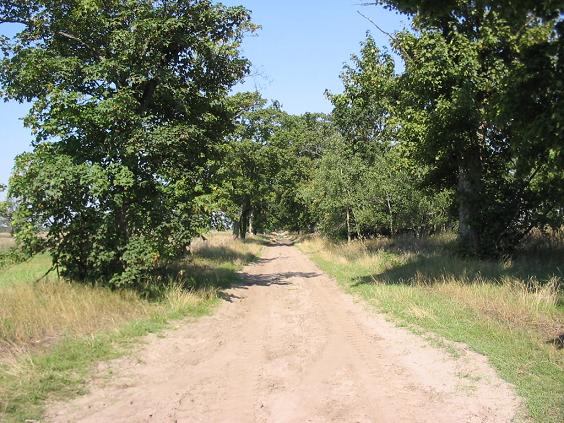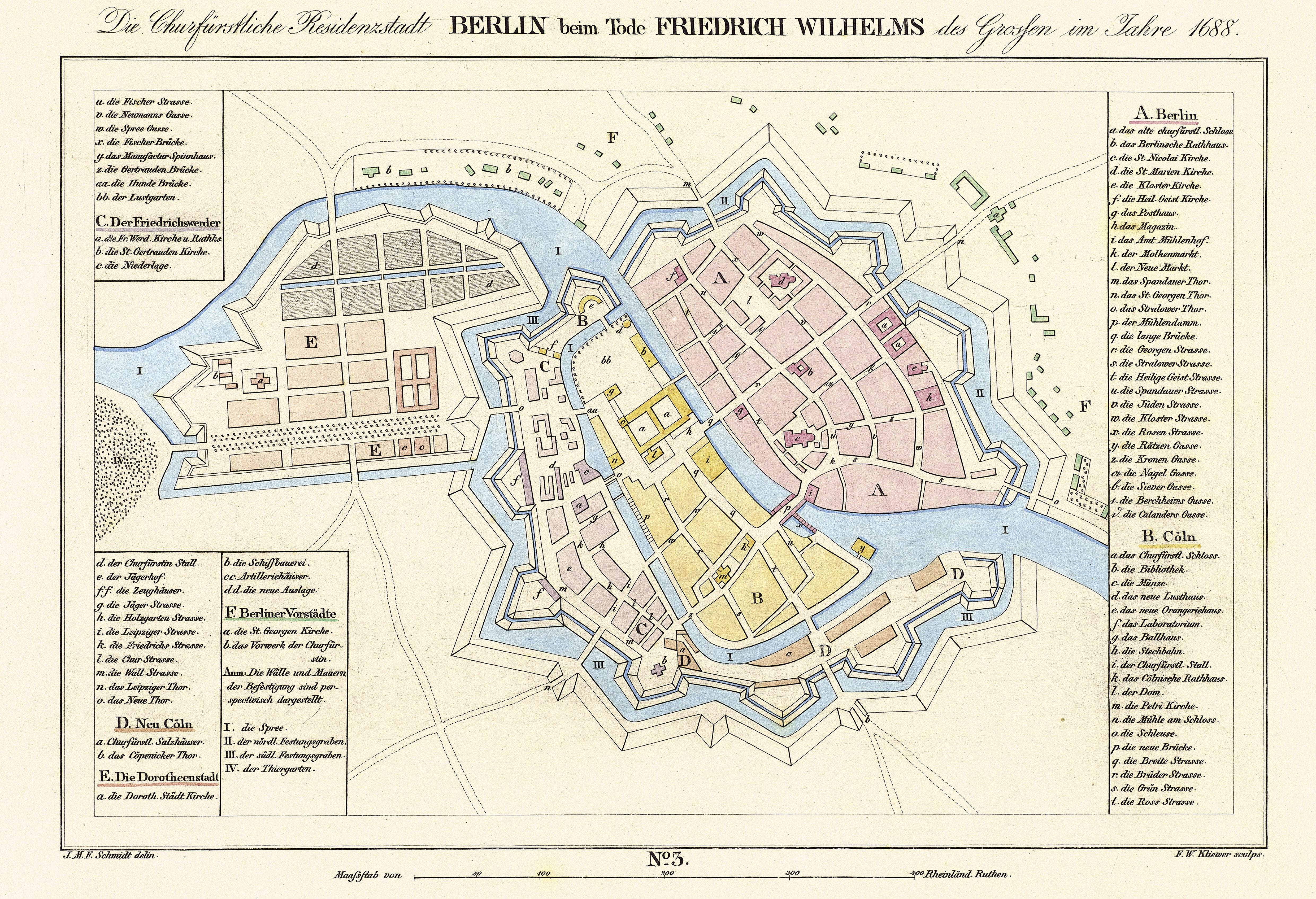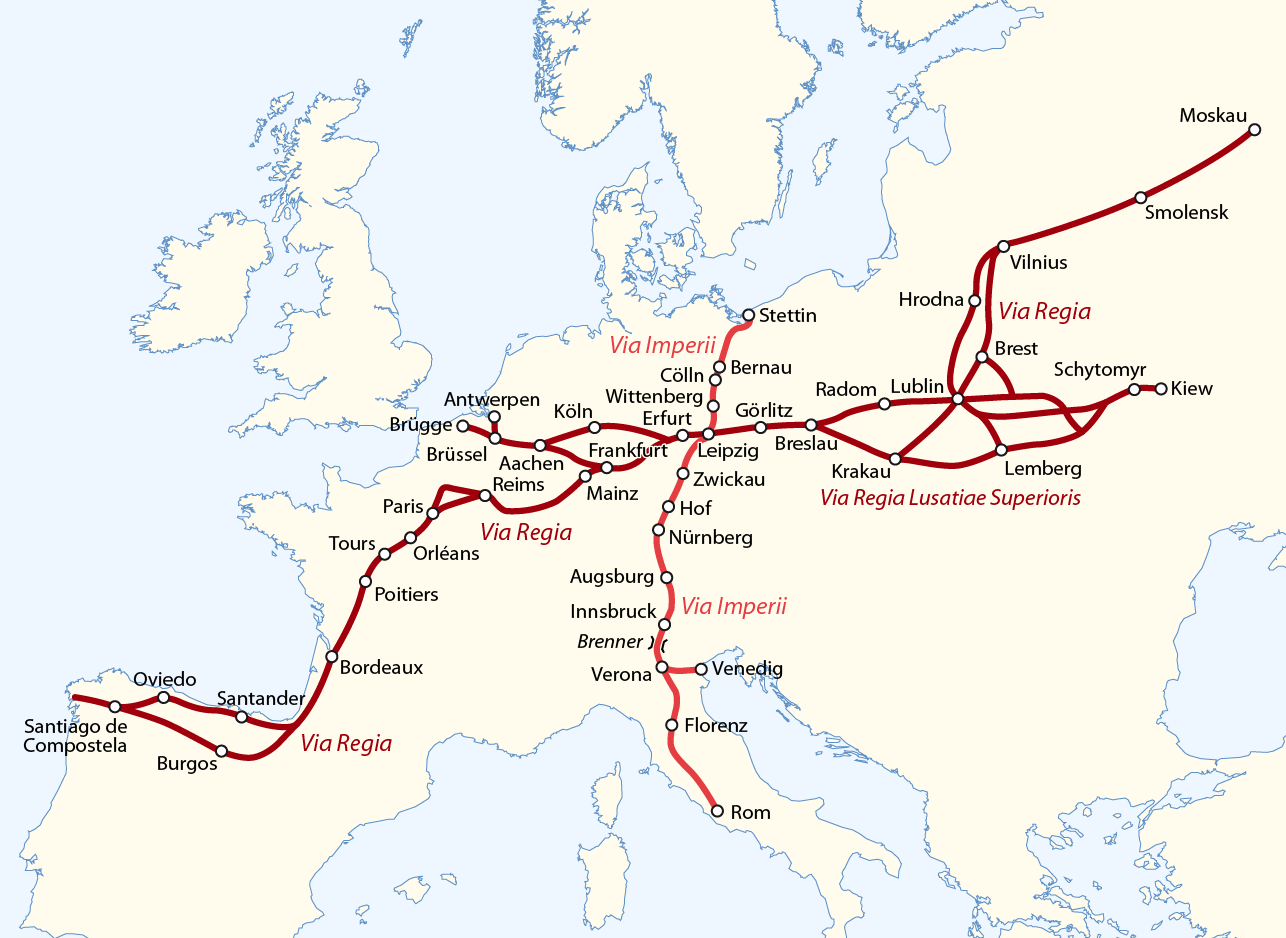|
Mühlendamm
Mühlendamm (Mill Dam) is a major thoroughfare in the central Mitte district of Berlin, Germany. It runs from the historic Cölln and Fischerinsel quarters to the Molkenmarkt square of Alt-Berlin via the Mühlendammbrücke (Mill Dam Bridge) crossing the Spree river. Named after several watermills at the site, a historic causeway was first laid out at this location about 1200 and became the nucleus of the late medieval city foundation. The current prestressed concrete bridge was built in 1968. It is part of an east–west road link to Berlin's city centre and the Bundesstraße 1 highway. Location The bridge links Gertraudenstraße, Spittelmarkt and Leipziger Straße in the southwest with the Alexanderplatz area in the northeast. It thereby is part of the main east–west road connection in Berlin's historic city centre, beside the parallel route of Unter den Linden, Schloßplatz and Karl-Liebknecht-Straße in the north. East of the bridge is a large lockage, called ''Mühlendammsc ... [...More Info...] [...Related Items...] OR: [Wikipedia] [Google] [Baidu] |
Teltow (region)
Teltow [] is both a geological plateau and also a historical region in the German states of Brandenburg and Berlin. As an historical region, the Teltow was one of the eight territories out of which the March of Brandenburg was formed in the 12th and 13th centuries. As a result of the (1239–1245) the question of territorial lordship of the newly created heart of the expanding march was finally decided here. Between 1835 and 1952 there was also a county, ; in addition a town immediately south of Berlin, in the present-day county of Potsdam-Mittelmark, bears the name Teltow. Geography and geology Boundary The Teltow is not a unified region, either from a historical or a landscape perspective. The present-day term is defined by an ice age plateau that consists mainly of ground moraine elements. Its natural northern border is defined by the range of the Tempelhofer Berge, among them the Kreuzberg rising to , along the southern bank of the Spree. To the east the borders are for ... [...More Info...] [...Related Items...] OR: [Wikipedia] [Google] [Baidu] |
Cölln
Cölln () was the twin city of Old Berlin (Altberlin) from the 13th century to the 18th century. Cölln was located on the Fisher Island section of Spree Island, opposite Altberlin on the western bank of the River Spree, until the cities were merged by Frederick I of Prussia to form Berlin in 1710. Today, the former site of Cölln is the historic core of the modern Mitte locality of the Berlin-Mitte borough in central Berlin. History Cölln is first mentioned in a 1237 deed, denoting a priest Symeon of Cölln's (Symeon de Colonia) Saint Peter's Church as a witness. This date is commonly regarded as the origin of Berlin, though Altberlin on the eastern bank of the Spree river was not mentioned before 1244 and parts of modern Greater Berlin, such as Spandau and Köpenick, are even older. Cölln and Altberlin were separated only by the river Spree, linked by the ''Mühlendamm'' causeway, hence there was a close connection right from the start. Since the trade route from Magdeb ... [...More Info...] [...Related Items...] OR: [Wikipedia] [Google] [Baidu] |
Molkenmarkt
Molkenmarkt (literally: "whey market") is the oldest square in Berlin. It is located in the Alt-Berlin quarter of the Mitte district, in the historic centre of the city. With approximately in size, it is today a major traffic junction, dominated by the large Altes Stadthaus administrative building on its southeastern side. History During the initial settlement around the Mühlendamm causeway across the Spree river about 1200 AD, the site developed as the central trading place. In the late 13th century, however, the venue became too small and a new marketplace beneath St. Mary's Church arose, which soon became more popular. The former site was thereafter known as ''Olde Markt'' or ''Alter Markt'' (Old Market) until 1685, when it was renamed to ''Mulkenmarkt'', later to change to ''Molkenmarkt'',Olde Markt Berlingeschichte.de, |
Bundesstraße 1
The Bundesstraße 1 (abbr. B1) is a German federal highway running in an east-west direction from the Netherlands, Dutch border near Aachen to the Poland, Polish border at Küstrin-Kietz on the Oder River. History The road developed from an ancient east-western trade route connecting the shore of the North Sea at Bruges with the area of Veliky Novgorod, Novgorod. A trade and military road was already mentioned in Ptolemy's ''Geography (Ptolemy), Geography'' about 150 AD, parts of it formed the medieval Westphalian Hellweg trade route, vital for the transport of salt and crops, and the course of the Via Regia, the Ottonian dynasty, Ottonian "royal road" through the Holy Roman Empire from Aachen to Magdeburg. From the late 18th century onwards, parts of the route were rebuilt as a chaussee, mainly in the area between Aachen and Jülich as well as on the nearby territory of the County of Mark, promoted by the Brandenburg-Prussian administration under Heinrich Friedrich Karl vom und ... [...More Info...] [...Related Items...] OR: [Wikipedia] [Google] [Baidu] |
Wittenberg
Wittenberg ( , ; Low Saxon language, Low Saxon: ''Wittenbarg''; meaning ''White Mountain''; officially Lutherstadt Wittenberg (''Luther City Wittenberg'')), is the fourth largest town in Saxony-Anhalt, Germany. Wittenberg is situated on the River Elbe, north of Leipzig and south-west of Berlin, and has a population of 46,008 (2018). Wittenberg is famous for its close connection with Martin Luther and the Protestant Reformation, for which it received the honourific ''Lutherstadt''. Several of Wittenberg's buildings are associated with the events, including a preserved part of the Augustinians, Augustinian monastery in which Luther lived, first as a monk and later as owner with his wife Katharina von Bora and family, considered to be the world's premier museum dedicated to Luther. Wittenberg was also the seat of the Elector of Saxony, a dignity held by the dukes of Duchy of Saxe-Wittenberg, Saxe-Wittenberg, making it one of the most powerful cities in the Holy Roman Empire. To ... [...More Info...] [...Related Items...] OR: [Wikipedia] [Google] [Baidu] |
Berlin Und Cölln Um 1250
Berlin is the capital and largest city of Germany, both by area and by population. Its more than 3.85 million inhabitants make it the European Union's most populous city, as measured by population within city limits having gained this status after the United Kingdom's, and thus London's, departure from the European Union. Simultaneously, the city is one of the states of Germany, and is the third smallest state in the country in terms of area. Berlin is surrounded by the state of Brandenburg, and Brandenburg's capital Potsdam is nearby. The urban area of Berlin has a population of over 4.5 million and is therefore the most populous urban area in Germany. The Berlin-Brandenburg capital region has around 6.2 million inhabitants and is Germany's second-largest metropolitan region after the Rhine-Ruhr region, and the fifth-biggest metropolitan region by GDP in the European Union. Berlin was built along the banks of the Spree river, which flows into the Havel in the western bor ... [...More Info...] [...Related Items...] OR: [Wikipedia] [Google] [Baidu] |
Via Imperii
Via Imperii (Imperial Road) was one of the most important of a class of roads known collectively as imperial roads (''german: Reichsstraßen'') of the Holy Roman Empire. This old trade route ran in a south–north direction from Venice on the Adriatic Sea and Verona in the Kingdom of Italy across the Brenner Pass through Germany to the Baltic coast passing the following cities: * Innsbruck in the County of Tyrol * Augsburg in the Prince-Bishopric of Augsburg * the Imperial city of Nuremberg * Bayreuth, Berneck, Münchberg and Hof in the Principality of Bayreuth * Plauen, Mylau and Reichenbach in the Vogtland region * Zwickau, Altenburg, Regis, Borna, Markkleeberg and Connewitz in the Margraviate of Meissen * Leipzig – intersection with east–west Via Regia * Wittenberg in Saxe-Wittenberg * Cölln/Berlin, capital of Brandenburg * Bernau bei Berlin * Stettin in the Duchy of Pomerania The cities on the route held the privilege of staple right, merchants were obliged to us ... [...More Info...] [...Related Items...] OR: [Wikipedia] [Google] [Baidu] |
Halle, Saxony-Anhalt
Halle (Saale), or simply Halle (; from the 15th to the 17th century: ''Hall in Sachsen''; until the beginning of the 20th century: ''Halle an der Saale'' ; from 1965 to 1995: ''Halle/Saale'') is the largest city of the German state of Saxony-Anhalt, the fifth most populous city in the area of former East Germany after (East) Berlin, Leipzig, Dresden and Chemnitz, as well as the 31st largest city of Germany, and with around 239,000 inhabitants, it is slightly more populous than the state capital of Magdeburg. Together with Leipzig, the largest city of Saxony, Halle forms the polycentric Leipzig-Halle conurbation. Between the two cities, in Schkeuditz, lies Leipzig/Halle International Airport. The Leipzig-Halle conurbation is at the heart of the larger Central German Metropolitan Region. Halle lies in the south of Saxony-Anhalt, in the Leipzig Bay, the southernmost part of the North German Plain, on the River Saale (a tributary of the Elbe), which is the third longest river flo ... [...More Info...] [...Related Items...] OR: [Wikipedia] [Google] [Baidu] |
Oderberg
Oderberg () is a town in the district of Barnim, in Brandenburg in northeastern Germany. It is situated 16 km east of Eberswalde, and 27 km southwest of Schwedt, close to the border with Poland, and in close vicinity of Berlin. Overview The territory has many lakes, remnants from the ice age. The area is widely used for outdoor recreation, such as biking, walking and boating. As Biosphere region it is home to many species of wildlife. Oderberg is closest to the Oder river crossing leading directly to Cedynia, Poland. Demography Gallery Oderberg town hall.jpg, Town hall Neuendorf church SW.jpg, Church in Neuendorf Oderberg 04 17 02 jiw.jpg, Saint Nicholas church Oderberg 10 14 06 jiw.jpg, Museum References Localities in Barnim {{Brandenburg-geo-stub ... [...More Info...] [...Related Items...] OR: [Wikipedia] [Google] [Baidu] |
Barnim Plateau
The Barnim Plateau is a plateau which is occupied by the northeastern parts of Berlin and the surrounding federal state of Brandenburg in Germany. Boundaries and Subdivision Boundaries The limits of the plateau are easily definable. The southern boundary is marked by the Berlin Valley, through which the River Spree flows. To the west, the boundary between Barnim and the Glien Plateau is marked by a north-south glacial valley. To the north and north east is the boundary with the Eberswald Valley, and in the east, Lubusz Land. Subdivision Traditionally the plateau is divided into the Upper and Lower Barnim, separated by a line running between Strausberg and Eberswalde. Typically, Lower Barnim does not reach higher than 80 metres above mean sea level (AMSL) whereas Upper Barnim is generally more than 100 metres AMSL. The highest point of the plateau is Semmelberg which stands at 157 metres AMSL. Settlements Until the growth of Berlin in the 19th century, Barnim was only spars ... [...More Info...] [...Related Items...] OR: [Wikipedia] [Google] [Baidu] |
Karl-Liebknecht-Straße
Karl-Liebknecht-Straße is a major street in the central Mitte district of the German capital Berlin. It is named after Karl Liebknecht (1871–1919), one of the founders of the Communist Party of Germany. The street connects the Unter den Linden boulevard with the Prenzlauer Allee arterial road leading to the northern city limits. Although part of the street dates back to medieval times, most of the buildings at its side were built in the 1960s, when East Berlin's centre was redesigned as the capital of East Germany. History The origins of the street lie in the quarter that arose about 1270 around St. Mary's Church, located north of Alt-Berlin's initial settlement. The "New Market" (''Neuer Markt'') square beneath the church was first mentioned in a 1292 deed; there were three alleys that went southwest from it down to the Spree river. They had had different names over the centuries and were ultimately known as Papenstraße (“Bishops' Street”, named for the Berlin residenc ... [...More Info...] [...Related Items...] OR: [Wikipedia] [Google] [Baidu] |







